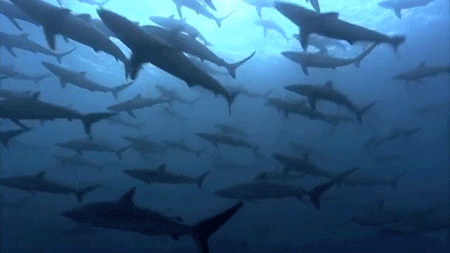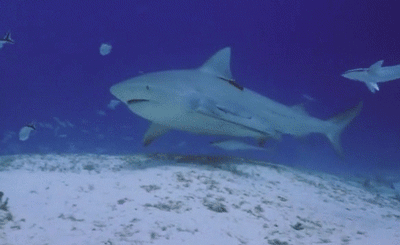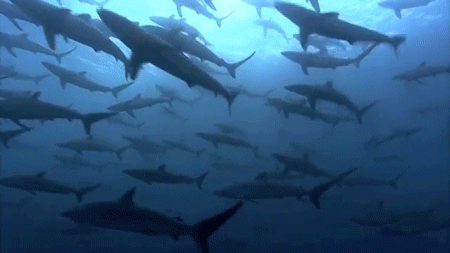One Minute Blood Typing

One minute blood typing
A collaboration between Monash University and Haemokinesis Pty Ltd has resulted in a momentous breakthrough in world health. The creation of a novel category of low cost paper diagnostics that can identify a person’s blood group in just one minute the innovation is named Group Legible Immunohematology Format (GLIF).
GLIF enables quick and easy blood typing, without the need for laboratory equipment, expertise or interpretation of results. Within one minute a written result is returned to the user. This concept can be used anywhere, by anyone, the applications are endless; third world countries, multi-trauma events, countries with heavy conflict to name but a few.
This Australian made and licenced technology was created following a long standing partnership between Monash University and Haemokinesis with funding provided by the Australian Research Council (ARC) under the criteria of a Linkage project.
More Posts from Curiositytherover and Others

The New York City Department of Consumer Affairs compared nearly 800 products with female and male versions — meaning they were practically identical except for the gender-specific packaging — and uncovered a persistent surcharge for one of the sexes. Controlling for quality, items marketed to girls and women cost an average 7 percent more than similar products aimed at boys and men.

DJI’s drone safety system has you signing up to fly in some areas

Astronomy Photo of the Day: 11/23/15 - The Plieades
November is the month of the Pleiades. When the leaves turn orange and begin to fall in the North, look to the skies, and you will see the Seven Sisters.
Ultimately, the ‘Seven Sisters’ is the common name given to this open star cluster. It stems from the fact that, although the region is dominated by a number of middleaged stars, most nights, only 6 or 7 are bright enough to see.
In fact, the Pleiades contains over 3000 stars.
The cluster is located in the constellation Taurus. It’s is one of the nearest star clusters to Earth and is also the cluster most obvious to the naked eye in the night sky.
Image credit: Marco Lorenzi http://www.glitteringlights.com
Jeff Williams: Record Breaker
Astronaut becomes U.S. record holder for most cumulative time in space!
The Olympics are over, but Americans are STILL breaking records. NASA astronaut Jeff Williams just broke Scott Kelly’s record of 520 cumulative days spent in space. When Williams returns to Earth on Sept. 5, he will have racked up 534 days in space. To celebrate this amazing achievement, here are some of the best images taken during his four spaceflights.

STS-101 Atlantis:
During May 2000, Williams made his first spacewalk during space shuttle Atlantis’ STS-101 mission. On this 10-day mission, Williams’ first spacewalk lasted nearly seven hours. He is pictured here outside the space station.

Expedition 13:
Williams experienced his first long-duration mission in 2006, when he served as flight engineer for Expedition 13 space station mission. During his time in orbit, he performed two spacewalks, saw the arrival of two space shuttle missions and resumed construction of the orbiting laboratory during his six-month tour. While on one of those spacewalks, Williams took this selfie.

Expedition 21/22:
Williams returned to space for another six-month mission in 2009 as a flight engineer on Expedition 21 and commander of Expedition 22. During that time, he hosted the crews of two space shuttle missions. The U.S.-built Tranquility module and cupola were installed on station. Here is an image of the then newly installed cupola.

Expedition 47/48:
This time around, Williams has been onboard the space station since March 2016, where he served as flight engineer for Expedition 47 and now commands Expedition 48. With over 7,000 retweets on Williams’ photo of an aurora from space, his Twitter followers were clearly impressed with his photography skills.
Make sure to follow us on Tumblr for your regular dose of space: http://nasa.tumblr.com

On 15 March 2009, when the space shuttle Discovery was about to launch into orbit, a wounded bat grabbed ahold of its fuel tank to become an officially recognised stowaway, despite safeguards that are supposed to keep such things from happening. He was a bat pioneer hell-bent on glory, or so we choose to believe.
So what exactly happened here? The story started on a mild Sunday evening at NASA’s Kennedy Space Centre, as crew members began prepping to launch the STS-119 mission. As the crew made their rounds checking for icy buildup on theDiscovery fuel tanks and whatnot, they were shocked to find a small free tail bat clinging to the tank’s foam insulation.
“Based on images and video, a wildlife expert who provides support to the centre said the small creature was a free tail bat that likely had a broken left wing and some problem with its right shoulder or wrist,” NASA explained. Unfortunately, it did not appear to be wearing a tiny spacesuit at the time.



Why music might be killing sharks
For too long, sharks have been portrayed and perceived as the menacing, lurking creatures in the deep. Contrary to popular belief, we are much more of a threat to them than they are to us.
Researchers have found that the ominous music that often accompanies even documentary footage of them has inspired excessive fear about sharks.
In an experiment at UC San Diego, participants watched footage of sharks. Some scenes featured uplifting music, and others had a more daunting score.
The effect was what you might expect. Viewers saw sharks as intimidating creatures when they they also heard ominous music.
But with uplifting music (or none at all), viewers had a more positive impression of sharks.
This is problematic because rarely do we see shark footage without the ominous music, and the negative portrayals of sharks may be hindering conservation efforts.
“We know from prior research that conservation progress for sharks is sluggish compared to marine mammals and that this slow response may be due in part to the societal marginalization of sharks,” says study co-author Elizabeth Keenan.
After all, in the words of Senegalese conservationist Baba Diou, “we will conserve only what we love.”
And while they’re still not exactly a furry, cuddly rabbit, consider this: you’re more likely to be struck by lightening than fall prey to a fatal shark attack.


How do electric guitars work? Learn more about the materials that make it possible with today’s graphic: http://wp.me/s4aPLT-guitar




Last Minute Geeky Gifts for the Science Lover in Your Life
Once again, the holiday season is upon us. Unfortunately, this leaves a lot of us at a loss. First, it’s easy to get bogged down by the commercialism that surrounds the season. Second, it’s sometimes difficult to find something that is really meaningful. To that end, here are some science themed gift ideas that you can get your loved ones (or maybe use as a treat for yourself). Some are educational, others are science based charitable contributions, all of them are pretty awesome.
Read more about the fascinating gifts at: http://futurism.com/links/geeky-gifts-for-the-science-lover-in-your-life/
Solar System: From TED Talks to Data Releases
Let us lead you on a journey of our solar system. Here are some things to know this week:
1. NASA-Funded Research

It’s all just a click way with the launch of a new public access site, which reflects our ongoing commitment to provide public access to science data.
Start Exploring!
2. Red Planet Reconnaissance

One of the top places in our solar system to look for signs of past or current life is Mars. Through our robotic missions, we have been on and around Mars for 40 years. These orbiters, landers and rovers are paving the way for human exploration.
Meet the Mars robots
3. Three Moons and a Planet that Could Have Alien Life

In a presentation at TED Talks Live, our director of planetary science, Jim Green, discusses the best places to look for alien life in our solar system.
Watch the talk
4. Setting Free a Dragon

Tune in to NASA TV on Friday, Aug. 26 at 5:45 a.m. EDT for coverage of the release of the SpaceX Dragon CRS-9 cargo ship from the International Space Station.
Watch live
5. Anniversary Ring(s)

Aug. 26 marks 35 years since Voyager probe flew by Saturn, delighting scientists with rich data and images. Today, thanks to our Cassini spacecraft, we know much more about the ringed planet.
Learn more about Cassini’s mission to Saturn
Learn more about Voyager 2
Discover the full list of 10 things to know about our solar system this week HERE.
Make sure to follow us on Tumblr for your regular dose of space: http://nasa.tumblr.com



A major breakthrough could let both same-sex partners be biological parents to their kids
Could two same-sex partners ever be biologically related to one baby? Maybe. With a relatively new process called in vitro gametogenesis, or IVG, scientists could combine genetic material from both parents. While we may have to wait a bit for it — here’s how it works.
-
 cocoamojojojo liked this · 7 years ago
cocoamojojojo liked this · 7 years ago -
 quiibbs liked this · 7 years ago
quiibbs liked this · 7 years ago -
 chessie-belle-blog liked this · 9 years ago
chessie-belle-blog liked this · 9 years ago -
 atomiclightbulb reblogged this · 9 years ago
atomiclightbulb reblogged this · 9 years ago -
 temporal-index liked this · 9 years ago
temporal-index liked this · 9 years ago -
 boliaogy reblogged this · 9 years ago
boliaogy reblogged this · 9 years ago -
 jjancorbin liked this · 9 years ago
jjancorbin liked this · 9 years ago -
 yourresidentialnerd liked this · 9 years ago
yourresidentialnerd liked this · 9 years ago -
 uhumonster liked this · 9 years ago
uhumonster liked this · 9 years ago -
 insanescriptist liked this · 9 years ago
insanescriptist liked this · 9 years ago -
 will-is-full-of-woe reblogged this · 9 years ago
will-is-full-of-woe reblogged this · 9 years ago -
 will-is-full-of-woe liked this · 9 years ago
will-is-full-of-woe liked this · 9 years ago -
 doctorjohcoy liked this · 9 years ago
doctorjohcoy liked this · 9 years ago -
 traditionalaviator reblogged this · 9 years ago
traditionalaviator reblogged this · 9 years ago -
 traditionalaviator liked this · 9 years ago
traditionalaviator liked this · 9 years ago -
 melonmeasles-blog reblogged this · 9 years ago
melonmeasles-blog reblogged this · 9 years ago -
 cinderella1181 reblogged this · 9 years ago
cinderella1181 reblogged this · 9 years ago -
 melonmeasles-blog liked this · 9 years ago
melonmeasles-blog liked this · 9 years ago -
 danlovelock liked this · 9 years ago
danlovelock liked this · 9 years ago -
 tauntingtruth reblogged this · 9 years ago
tauntingtruth reblogged this · 9 years ago -
 epsiloncontinuum reblogged this · 9 years ago
epsiloncontinuum reblogged this · 9 years ago -
 epsiloncontinuum liked this · 9 years ago
epsiloncontinuum liked this · 9 years ago -
 3456sblog liked this · 9 years ago
3456sblog liked this · 9 years ago -
 lonecheetah liked this · 9 years ago
lonecheetah liked this · 9 years ago -
 corruptorofmorels-blog reblogged this · 9 years ago
corruptorofmorels-blog reblogged this · 9 years ago -
 cabult liked this · 9 years ago
cabult liked this · 9 years ago -
 aurigeae reblogged this · 9 years ago
aurigeae reblogged this · 9 years ago -
 completely-pear-shaped reblogged this · 9 years ago
completely-pear-shaped reblogged this · 9 years ago -
 completely-pear-shaped liked this · 9 years ago
completely-pear-shaped liked this · 9 years ago -
 bkmk107037-blog liked this · 9 years ago
bkmk107037-blog liked this · 9 years ago -
 noobsaibot99 liked this · 9 years ago
noobsaibot99 liked this · 9 years ago -
 thecoldseahorse liked this · 9 years ago
thecoldseahorse liked this · 9 years ago -
 sillyandserious liked this · 9 years ago
sillyandserious liked this · 9 years ago -
 chuck-norri-blog liked this · 9 years ago
chuck-norri-blog liked this · 9 years ago -
 dmseiithegr8 liked this · 9 years ago
dmseiithegr8 liked this · 9 years ago -
 redtrashblack liked this · 9 years ago
redtrashblack liked this · 9 years ago -
 atcoops167-blog liked this · 9 years ago
atcoops167-blog liked this · 9 years ago -
 andrewbaggott liked this · 9 years ago
andrewbaggott liked this · 9 years ago -
 isclosetheclosestst4r-blog reblogged this · 9 years ago
isclosetheclosestst4r-blog reblogged this · 9 years ago -
 ti83plus reblogged this · 9 years ago
ti83plus reblogged this · 9 years ago -
 primordial-soupp-blog reblogged this · 9 years ago
primordial-soupp-blog reblogged this · 9 years ago